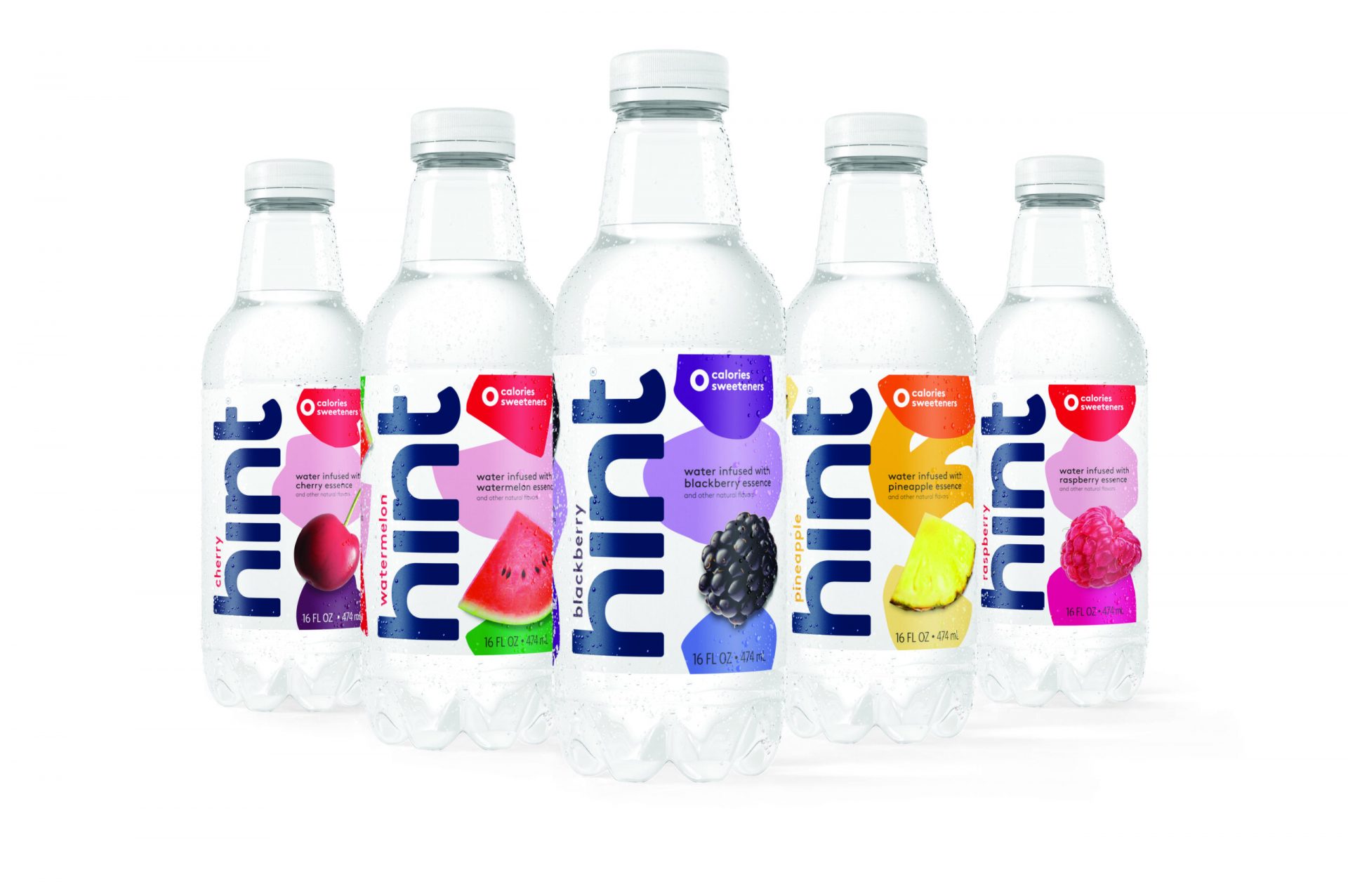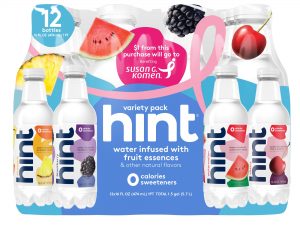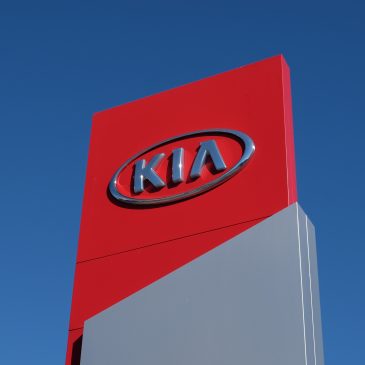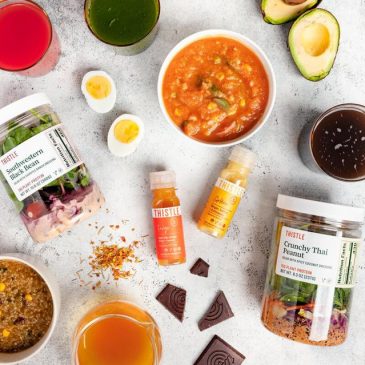Blog
How To Use Immersive Storytelling To Bring Your Brand Purpose To Life


Companies built on solving problems foster consumer goodwill and carve out a competitive advantage. An excellent example of a brand that differentiates itself by providing purposeful solutions is Hint. Founder and CEO, Kara Goldin, started the unsweetened flavored water business collecting customer feedback from moms in the school drop off line to selling in America’s largest retailers. The pioneer was recently honored as one of Fortune’s most powerful women entrepreneurs. I had the pleasure of speaking with Goldin about her success story.
Simon Mainwaring: There’s no category more competitive than water. How many people doubted you?
Kara Goldin: Thousands. The biggest challenge when you hear “No” from people is that you have your own doubts.
SM: Why did you decide to do it anyway?
KG: It goes back to customers. When people say things like, ‘You’re helping me drink water. I don’t want these other products anymore. Why aren’t you in more places,’ it helps squash the doubts.
SM: Was there a moment when you thought, ‘This is not just a good idea, I’m going to do this?’
KG: I ran AOL’s e-commerce prior to this and I didn’t know a thing about the beverage industry. I had lost a lot of weight. My skin had cleared up and I resolved health issues that I didn’t even know I had just by getting off diet coke and drinking water. This was 15 years ago and no one was talking about it. For me, water was boring. So I put all this fruit in it. People were interested. The difference between a product that has a purpose and one that doesn’t is you have the ability to educate. Consumers want to hear that.
I was goofing around thinking, ‘It would be super cool if I could get a product like this at Whole Foods.’ I decided to do it on the morning of May 27th, 2005, the day I was giving birth to my fourth child. I had a babysitter that day because I knew I was going in for a planned C-Section in the afternoon.
My husband said, ‘What do you want to do? We don’t have to go to the hospital until two.’ We had a few pallets of product in our garage. I said, ‘Let’s load some cases in the car and go to Whole Foods. I’d love to see it on the shelf before I deliver the baby.’
At Whole Foods, I found a guy I had been in dialogue with stocking shelves in the beverage aisle. I said, ‘Hi, I don’t know if you remember me.’ He said, ‘You’re very pregnant.’ I said, ‘I’m super pregnant and I’d love to get the product on the shelf.’
He was reluctant. I said, ‘Gosh, it’d be really great. I’m having a planned C-section today.’ He said, ‘What’s a planned C-Section?’ My husband was horrified, backing up in the fruit section, thinking, ‘She’s actually talking to him about planned C-sections versus vaginal deliveries.’
He was fascinated and after 20 minutes I asked again about getting Hint on the shelf. This time, he said, ‘I’ll do my best. No guarantees.’
The next day I got a phone call from the Whole Foods buyer. Ten cases were ‘gone from the shelf.’ I hadn’t thought about consumers actually buying the product. Suddenly this light bulb went off. If you make a good product people actually buy it. It sounds crazy simple but it was super powerful.
SM: Did that personal journey to health inspire you to start a company that had an overt purpose?
KG: After seeing how much weight I lost, people asked, ‘So, you just started drinking water?’ At the time, vitamin water was really popular. I noticed there was more sugar in it than a can of Coke. I told people that and they were surprised. They automatically thought, this is healthy. That’s what I thought when I saw the word ‘diet’ on Diet Coke.
SM: How did that lead to the overarching purpose of helping people live healthier lives?
KG: Sometimes potential customers would thank me for educating them and then, half joking, say, ‘I’m going to go stick a cucumber or pomegranate in my water and do that at home.’ That is fine if you’ve actually got access to fruit at home. But if you’re out and about, that’s challenging.
People saw how passionate I was about it and all of a sudden they are talking about this water idea as a company. I thought I’d just do this and see what happens. My husband went with me to this bottling plant in Chicago to bottle the first product. He said, ‘I see, you’re excited because you’ve never worked with a physical product.’ I realized then that the main reason why I want to do this is that if we can get people to enjoy water, then we will change health.
SM: How did you build awareness that this is a different product altogether into your marketing?
KG: My father-in-law is a gastroenterologist. When a person is having a gastro problem, then they leave the office, you never know if they’re actually doing what you’ve told them to. I thought that if I can get people to enjoy water, then we’ll have permission to tell them how this product is better.
SM: How would you characterize yourself as an entrepreneur in those early years?
KG: Driven and curious. I like this concept of just getting people to love the product .
SM: How did you test it for the market? It’s such a rigorous process now.
 KG: We were making it in our kitchen. Just cutting things up and throwing them in water. I figured out pulp actually made water disgusting. I started to use the skins and oils of the fruit from the rinds. They have the zest and the real interesting part of the fruit.
KG: We were making it in our kitchen. Just cutting things up and throwing them in water. I figured out pulp actually made water disgusting. I started to use the skins and oils of the fruit from the rinds. They have the zest and the real interesting part of the fruit.
In terms of market research, I was living right across the street from a school in San Francisco. In the mornings, the mothers would wait in their cars in a long drop off line. I thought, “If I’m there at eight in the morning, I can get them to try this product.” Most founders, across categories, will admit that they had no idea what they were doing.
SM: How did you pick and bring your name, packaging and purpose to market?
KG: The key was always figuring out where our customer was. Whole Foods was a new store 15 years ago. I focused not only on San Francisco Whole Foods shoppers, but also health conscious consumers purchasing from specialty foods stores around the Bay area.
My husband’s a New Yorker. He’s a doubter. He said, ‘What if the California consumer is different than the New York consumer?’ Whole Foods wasn’t there yet, so we took a trip to check out some stores.
SM: How did you pitch Whole Foods in the first place?
KG: As I mentioned, the local store guy. They used to allow a certain percentage of shelf space to be for local brands. Half of what I’ve been able to accomplish is that I didn’t know the rules. I would just ask for what I wanted. I was never afraid and always curious.
SM: How did you scale from that first Whole Foods to being this ubiquitous brand around the country?
KG: Consumers. We didn’t have money for advertising. Instead, we put all of our money into trying to get consumers to try the product. We found events, everything from fun runs to Autism Speaks to breast cancer fundraisers. I’d just ask if they needed water. I still hadn’t convinced myself this was a company.
SM: Did you ever have a moment where you thought you were going to give up?
KG: The company was on a major high because we got into Starbucks. We initially thought it was going to be a test. Then they told us we were going to be in all 11,000 US Starbucks locations. We were in the Bay area and on the east coast in a few places but nothing like Starbucks.
Within a few months, we were selling three times the amount we set as an internal success goal. We had about 40% of our overall sales at that point in Starbucks. We get a call from a buyer a year and a half later saying, ‘I’m the new buyer. I just wanted to share that we’re going to be removing you from Starbucks next week. This is a directive from Howard Schultz’s office.’
I said, ‘Maybe he hasn’t seen the numbers.’ She explained that he wants to put higher margin business into the case, including food. We’re a $2 item. You’ve got to sell a lot of water in order for it to make sense. There was nothing I could do.
The hardest part was knowing I had six months worth of product in the warehouse that was going to expire in a few months. I cried and I don’t cry often. I told the team that the main thing we need to figure out is how to find those customers that were buying our products. Out of the blue, we got a call from an Amazon grocery buyer, which was a new vertical at the time.
SM: How did Starbucks and Amazon find you?
KG: They are both Seattle-based companies. The buyer had tried the product in Starbucks and loved it. I didn’t tell him that the contract had ended. He asked how long the lead time would be? I told him we had overproduced our top flavor, Blackberry, and we could sell it to him today. He bought it.
I had my doubts about online grocery. Now we’re the number one flavored water on Amazon and sell a ton of product through them.
I learned two things from that experience. One, the sad doesn’t always last and the great stuff will come. Two, never put too many eggs in one basket.
SM: With all the nonprofits you’ve worked with, how do you codify your impact goals?
KG: People started leaving comments on Amazon about health. ‘Hint helps me drink more water,’ or ‘I’ve got type two diabetes and Hint is my go to drink.’ There was so much customer feedback that I had missed. That relationship with the consumer made me start to see the impact.
It was a discovery and a roadblock because Amazon owns the data. We wanted to get that relationship with the consumer, tell them what else we were doing and ask questions. So we launched our direct to consumer platform on www.drinkhint.com. More and more consumers were coming there and sharing their feedback. Fast forward, almost seven years now and that is 55% of our overall business.
SM: How big was your team at this point? What did your culture look like?
KG: At that time, 20 to 25 people. Now there are about 200. We’re an omni-channel brand. Just this year we launched in Walmart and Sam’s Club. At the beginning of April, we got a call from Costco. They were having issues with some of their suppliers. A lot of products are made in Asia. With the pandemic, many of these factories shut down. They knew that we produce everything in the U.S. That’s not to say there’s anything wrong with producing in other countries. It’s just easier to be national. From a sustainability standpoint, we’ve always tried to keep manufacturing as close to our distribution points as possible.
SM: How did you respond to COVID-19?
KG: I was visiting New York and on March 8th. There was this anxiety in our Tribeca office. People were not comfortable taking the subways. We made an early decision to shut down there on March 11th.
I flew back to San Francisco and went to Target on the way home. There were no bottles on the shelf and no, backstock. We convinced stores and distributors that we are an essential product. Then we offered to bypass our distributors, send truckloads immediately and invoice them later. About half of them took us up on it. They were happy to have products on their shelves.
We always worry about contamination because we don’t use preservatives. Before the pandemic, my husband, our COO, pushed us to automate our production lines. Right before 2020 we removed all people from our production rooms. That helped us avoid coronavirus-related problems with the FDA.
SM: What kind of purposeful work are you doing in the water category?
KG: There are about 30 million kids in public and Catholic schools across the country that receive school lunch trays. I was working in Washington on getting Hint on the menu instead of a carton of milk. The Dairy Association, which essentially owns the beverage choice on these trays, said that if kids want water, they can get it from drinking fountains.
These water fountains are filled with lead, teflon and other toxins. About 60% of States monitor what’s coming out of fountains. Even in some of the better States only want to test five spigots. I’ve been working with Congresswoman Jackie Speier to test all spigots in schools nationwide and publicly share what’s in the water supply.
SM: You’ve got this great book called Undaunted and podcast called Unstoppable. What have you learned through your journey that you’d like to share with aspiring social entrepreneurs?
People peg me as fearless. I have plenty of fears and doubts. I just never allow them to get in my way. If you don’t know the rules, don’t stop and figure them out. It’s more about a journey and less about accomplishments. Don’t pay attention to the competition. Keep doing what you’re doing really well.
How To Use Immersive Storytelling To Bring Your Brand Purpose To Life

Purpose At Work: Lessons From Kia On Leveraging Marketing For Impact

Purpose At Work: How Thistle Inspires Behavior Change

